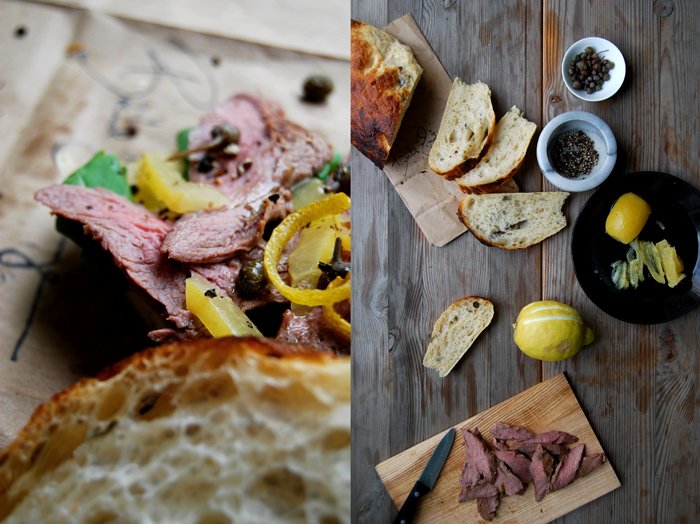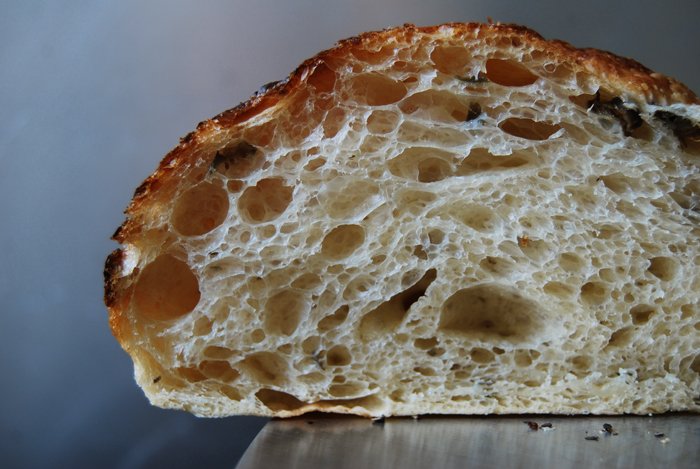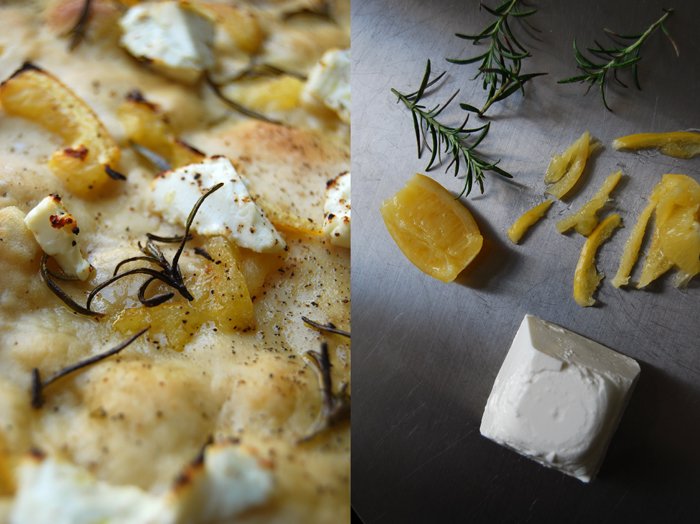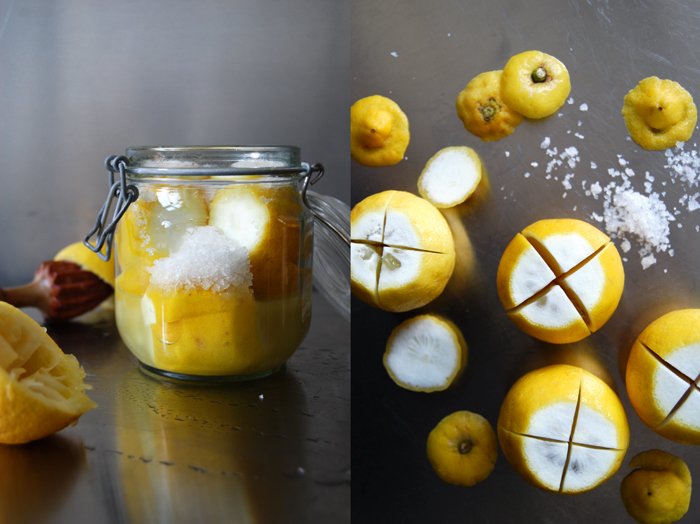Juicy Lamb, Moroccan Lemon and Caper Sandwich
Maltese capers, dried tomatoes, wild fennel seeds, honey and sea salt, these were just some of the goods I took home with me from my last trip to the Mediterranean island and these were also the ingredients I offered Malin from The Bread Exchange to choose from for our next sandwich. The sourdough queen went for salty capers and then it was my turn to come up with an idea for our next eat in my kitchen x The Bread Exchange creation.
Malin called me in the morning when the bread was done, after a night without much sleep as she had to get up a couple times to take care of her caper sourdough bread. I jumped on my bike excitedly to meet her in her kitchen which was already filled with the sweetest smell of freshly baked bread when I arrived. When she showed me her beautiful loaf of bread, juicy and spongy on the inside as always, refined with capers and the amazing oily crust that Malin mastered to perfection, I couldn't wait to get started in my kitchen! A colourful composition of a few strong flavours, a wave of tastes on the tongue, that was my idea when I held the warm bread in my hands.
This inspiration led to a rich sandwich voluptuously stuffed with tender slices of lamb fillet, cooked for just a few minutes to keep it pink on the inside, thin strips of my Moroccan preserved lemons, crisp lemon peel roasted in olive oil (I used both the infused oil and the rind), salty capers and spicy rucola leaves. This was one of those moments when I wasn't sure if I went a bit overboard with the flavours, especially when they are all so powerful on their own. But the first bite cleared any doubts, there wasn't too much of anything, it was just right!
This sandwich has been featured on Food52!
Lamb, Moroccan Lemon and Caper Sandwich
For 4 sandwiches you need
the best sourdough bread you can get, 8 thick slices
lamb fillet 250g / 9 ounces
Moroccan preserved lemons, cut into thin strips, 1/4
lemon peel, 6 long strips
olive oil 3 tablespoons plus more for frying
capers, rinsed and drained, 1 heaped tablespoon
rucola (arugula) leaves, a small handful
black peppercorns, crushed in a mortar
salt
Set the oven to 200°C / 390°F.
In a small baking dish, mix 3 tablespoons of olive oil with the lemon peel and roast in the oven for 6 minutes or until the lemon is crisp and golden (it shouldn't be brown!). Set the oil and roasted peel aside.
In a heavy pan, heat a splash of olive oil, season the lamb fillet with salt and pepper and brown for 1 1/2 -2 minutes on each side. The meat should stay pink to keep its juiciness. Wrap the fillet in aluminum foil and set aside for a few minutes.
Drizzle a little of the lemon oil on a slice of bread and cover with a few rucola leaves. Cut the lamb fillet into thin slices and spread on top of the greens. Scatter over some strips of Moroccan lemon, roasted lemon peel, capers and lemon oil. Sprinkle with some crushed black pepper and close with another slice of bread.
Here are more eat in my kitchen x The Bread Exchange sandwiches:
Pizza Bianca with Moroccan Lemons, Chèvre and Rosemary
When I wrote about my Moroccan Preserved Lemons about a month ago, Kelly from My Soulfull Home got in touch. I met Kelly through a blog tour in February which she had organised. She asked me to join the tour together with 15 other bloggers, it was carnival and I shared my family's Berliner experience. A few weeks ago she told me about a delicious pizza bianca with lemons and rosemary which one of her friend's makes and she told me that I should give it a try as soon as my lemons were ready. Here they are, sour, soft and juicy!
When I had the first piece of my own preserved lemons in my mouth, I felt a bit excited! My aunt was with me in my kitchen, she was the one who inspired me to preserve lemons in the first place. The first bite was intense, a bit salty as I forgot to rinse the slice of lemon, too much excitement! When I let some water rinse off a bit of the saltiness (for 2-3 seconds), they were perfect! The preserving liquid, concentrated juices of all the lemons, tastes as good and is great for strong sauces and stews.
For my pizza bianca, I decided to add some chèvre to mix its smooth milkiness with the lemon's sourness and the woody rosemary. Ricotta would have worked too, but I wanted the strong aroma of this soft goat cheese. I sprinkled some olive oil on top which gave it a bit of a focaccia feeling, some sea salt and pepper and enjoyed this absolutely delicious summery snack. Thank you Kelly!
If you like pizza as much as I do, you can also try my Aubergine and Pecorino Pizza or my Spinach and Ricotta Pizza.
Pizza Bianca with Moroccan Lemons, Chevre and Rosemary
I always start to prepare the dough 2 hours before I bake it to give it enough time to rise. I bake my pizza on a hot baking sheet which has a similar effect to a pizza stone.
For 1 large pizza (size of 1 baking sheet) you need
For the topping
chèvre or ricotta, 200g / 7 ounces
preserved lemon, rinsed and thinly sliced, 1(you could also use lemon zest)
fresh rosemary, the needles of 5 sprigs
olive oil 4-6 tablespoons
salt and black pepper
For the dough
plain flour 350g / 12.5 ounces plus more for mixing
dry yeast 1 package (for 500g / 1 pound of flour)
water, lukewarm, 190ml
olive oil 3 tablespoons
salt 1 teaspoon
Combine the flour with the yeast and salt, add the lukewarm water (you might not need all of it) and olive oil. Mix with your dough hooks for a few minutes. The dough shouldn’t be moist and sticky at all, more on the dry side. Continue kneading and punching with your hands until you have an elastic dough ball, not too hard, not sticky. Put the dough back in the bowl, cover with a tea towel and let it rise in the warm oven (35°C / 95°F) for 40 minutes. This works really well but make sure that your oven is set to top/ bottom heat and not to fan.
When the dough is well risen, roll it out on a very well floured working surface (this is very important or you'll have problems taking it off again). It should be a bit smaller than the size of your baking sheet. Cover with a tea towel and let it rise for another 10-15 minutes.
The pizza
Set your oven to 260°C / 500°F. My oven has a special pizza setting but you can use top / bottom heat as well. Put the baking sheet on the bottom of your oven to heat it (for around 10 minutes).
Take the hot baking sheet out of the oven, turn it around and place it carefully on two stable wooden boards or mats as it will be very hot. Place your risen dough carefully but quickly (best done by two people) on the baking sheet, push it gently into place if necessary. Sprinkle with the slices of lemon, rosemary and olive oil and dollop the chèvre with a tea spoon on top.
Put the baking sheet back into the oven, on the bottom again, and bake for a few minutes until the pizza is golden, season with salt and pepper.
Moroccan Preserved Lemons in a Jar
My aunt collected a few recipes requiring Moroccan preserved lemons. I had never heard of this North African delicacy before and she told me that they are hard to find in stores but she was lucky enough to spot them in the gourmet section of a department store. Happy to have found them she nearly fell over when she saw the price! She bought a small jar and we tried a lemon together, it was wonderfully juicy, aromatic and sour! We decided that we would manage to make our own.
Unfortunately, the organic lemons on offer at the moment aren't perfect but they'll work with a trick. Ideally you would use very small citrus fruits with thin rind, they just need to be carved slightly, two long incisions along the sides. I wish I could pick the fruits off my mother in law's tree in her garden in Malta, ripened under the Mediterranean sun! For now, I have to work with what I've got but that's no problem. I just cut off both ends and quartered the fruit without cutting all the way through (as you can see in my photos).
The next step is to rub lots of coarse sea salt into the lemons, Mr. Cini's sea salt from the Gozitan salt pans was called to use. After a few seconds the juices started running, I compressed the fruits and pushed them into the jar one after the other. I poured the juice of a lemon and some more salt on top before I closed it. 2 days later I had to compress the lemons again and check if they were covered in juice. Now they are sitting in my pantry and I'll have to wait for a month before I can enjoy them. My aunt told me that they taste delicious in salads and couscous, and with poultry and lamb. I can't wait!
Moroccan Preserved Lemons
For 5 lemons preserved in an 800ml jar you need
organic lemons, rinsed, 5 (small ones if possible)
coarse sea salt 70g / 2.5 ounces
juice of 2 big lemons
Sterilize a preserving jar for 5 minutes in boiling water.
Cut both ends off the lemons and quarter the fruits without cutting all the way through (as you can see in my photos). Rub a heaped teaspoon of salt into each lemon, compress them and push into your sterilized jar. Add the rest of the salt and the lemon juice, push everything down and close the jar.
After 2 days press down on the lemons again with a spoon and check if they are covered in liquid. Add the juice of another lemon if they aren't almost covered. Put the jar in a dark place and wait a month. When they are soft and ready to eat, rinse them quickly before you use them in an aromatic meal.




















